From tomorrow (Wednesday 1 February) the west coast demersal fishery will be closed to recreational fishing until the end of March as part of new changes introduced by the Government in December (see below for more details about the rule changes).
Recfishwest called for this late summer closure as it coincides with part of the peak spawning period for dhufish and we are proud it is widely supported by our members and our Expert Working Group because we care passionately about the future of these fish.
However, we remain disappointed that the closure will not apply to all sectors with the commercial fishing industry able to continue to target spawning aggregations of dhufish during this period.
Recfishwest CEO Dr Andrew Rowland said, “If the Government truly cares about ensuring the sustainability of demersal fish between Augusta and Kalbarri, they need to explain why they do not support better protection for spawning dhufish.
“It’s yet another example of the fundamentally inequitable way this fishery has been managed for decades and it’s too important for old and embedded sectoral favouritism to continue to underpin management decisions.
“Fisheries management should ensure the greatest good is delivered to the greatest number from the sustainable catch of fish – that is simply not happening under the current regime with 64 per cent of the west coast demersal catch reserved for private profit.
“We need a fairer more equitable and sustainable approach, giving spawning dhufish more protection and fishing mums and dads more time out on the water to be able to optimise all the social, mental and well-being benefits fishing brings.”
HEAR WHAT ANDREW HAD TO SAY ON THE ABC REGIONAL DRIVE PROGRAM HERE
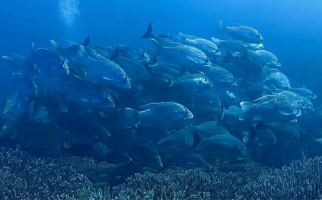
Commercial licence buy-back scheme details must be thrashed out as soon as possible
Recfishwest will always support action to ensure sustainability but shutting out 700,000 West Aussies from being able to catch dhufish and pink snapper for six months of the year is an unnecessary overreach.
Part of the $10 million package put forward by the Fisheries Minister to support the west coast demersal changes included a yet-to-be specified amount to be allocated to a Voluntary Fisheries Adjustment Scheme (VFAS) to offer commercial operators fair and reasonable compensation to voluntarily exit the fishery.
“We need the Government to thrash out the details and progress the VFAS as quickly as possible,” said Dr Rowland. “There is a great opportunity here for the Government to put right an outdated and broken fisheries policy that places profit before the public good.
“We need a comprehensive and transparent buy-back scheme that can assure the community that every tax-payer’s dollar spent on it is delivering the best return through a sustainably and equitably managed system in line with the harvest strategy for this fishery.”
Changes to the west coast demersal rules – 1 February 2023
The free upgraded Recfishwest app contains all the fishing rules at your fingertips including outside of mobile range. You can download the app for free on the App and Google Play stores.
The new demersal rules will go live in the new app from Wednesday when they come into effect – in the meantime see below for the rule changes in full.
Annual demersal fishing closed seasons in the West Coast Bioregion:
– 1 February to 31 March (to 28 March in 2024 to accommodate Easter) (inclusive);
– 1 August to the beginning of the September/October school holidays (22 September 2023); and
– end of the September/October school holidays (9 October 2023) to 15 December (inclusive).
Note: this does not apply to land-based line fishers, charter fishers, or commercial fishers.
- Bag limit of two WA dhufish within the mixed species bag limit of two demersal scalefish in the West Coast Bioregion.
- Demersal scalefish boat limit of four (excludes charter boats).
- Remove the WA dhufish boat limit.
- Remove size limits for WA dhufish, baldchin groper and breaksea cod.
- A maximum of one bait or lure attached to a line can be used when fishing for demersal scalefish in the West Coast Bioregion.
- Extend the timing of the pink snapper spawning closure in Cockburn and Warnbro Sounds from 1 August to 31 January (inclusive).
- Realign the baldchin groper spawning closure at the Abrolhos Islands from 1 October to 31 December (inclusive).
Abrolhos Islands: The Abrolhos Island Fish Habitat Protection Area is being managed as a Wilderness Fishing Area to allow visitors to experience unique marine-based activities, while appreciating a sense of remoteness, amenity and lifestyle.
The following changes to bag and possession limits provide for low take, low takeaway recreational fishing at the Abrolhos Islands while also contributing to the recovery of demersal scalefish stocks in the West Coast Bioregion;
- bag limit of one demersal scalefish;
- possession limit of:
– 5kg of fillets from any species, plus 5kg of fillets from large pelagic finfish (must have skin attached for identification purposes); OR
– one day’s bag limit of whole fish.
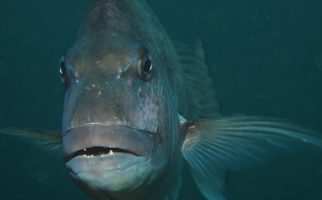
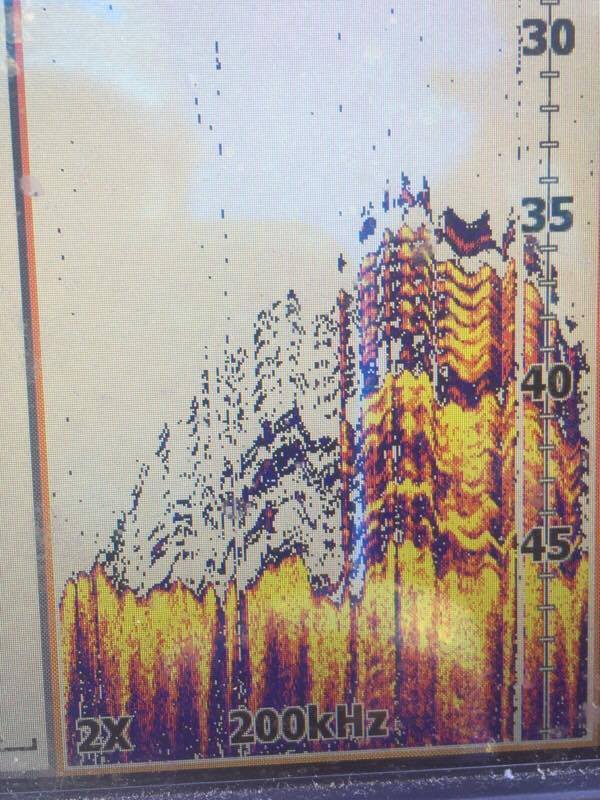 Fishing for Perth metro pelagics has a new breath of new life with the instalment of two steel reef towers, which will boost fishing opportunities for fishers. The towers are an addition to the numerous other artificial reef and habitat enhancement projects complete or underway in WA, funded through recreational fishing licence fees.
Fishing for Perth metro pelagics has a new breath of new life with the instalment of two steel reef towers, which will boost fishing opportunities for fishers. The towers are an addition to the numerous other artificial reef and habitat enhancement projects complete or underway in WA, funded through recreational fishing licence fees.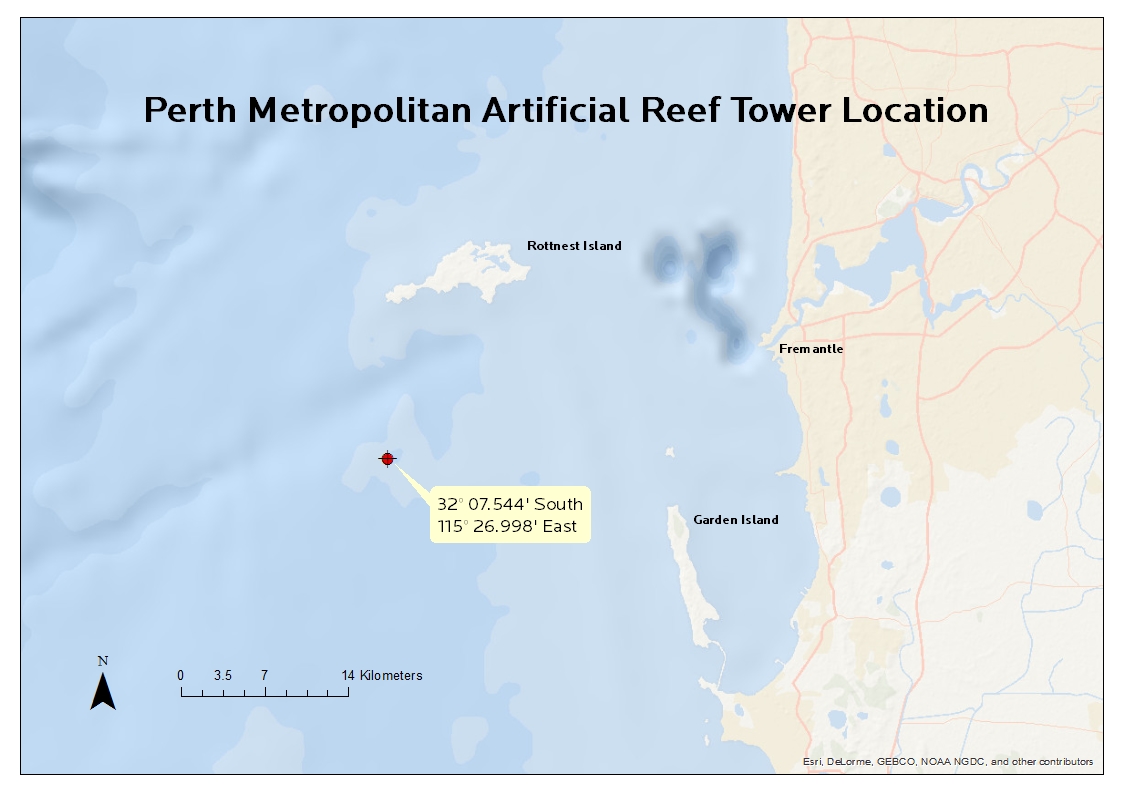
 Designed by Western Australian artificial reef specialists, Subcon, the purpose built reefs are an impressive 12.5m high or the same size as a four storey building! To add to its height, each reef weighs a massive 50 tonne and is 10m long and 7.8m wide. The costly process of reef deployment at sea has also been reduced through a new innovative technique that has never been used with this style of artificial reef anywhere in the world. Instead of being loaded onto a barge and deployed using a crane, the large structure will be towed out into position and its buoyancy tanks will be flooded to safely and cost effectively sink the towers.
Designed by Western Australian artificial reef specialists, Subcon, the purpose built reefs are an impressive 12.5m high or the same size as a four storey building! To add to its height, each reef weighs a massive 50 tonne and is 10m long and 7.8m wide. The costly process of reef deployment at sea has also been reduced through a new innovative technique that has never been used with this style of artificial reef anywhere in the world. Instead of being loaded onto a barge and deployed using a crane, the large structure will be towed out into position and its buoyancy tanks will be flooded to safely and cost effectively sink the towers.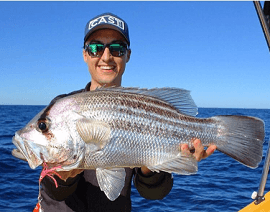
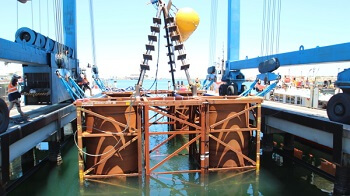 To add to its height, each reef weighs a massive 70 tonne and is 10m long and 7.8m wide. The costly process of reef deployment at sea has also been reduced through a new innovative technique that has never been used with this style of artificial reef anywhere in the world. Instead of being loaded onto a barge and lowered using a crane, the large structure is being towed out into position and its buoyancy tanks will be flooded to safely and cost effectively sink the towers.
To add to its height, each reef weighs a massive 70 tonne and is 10m long and 7.8m wide. The costly process of reef deployment at sea has also been reduced through a new innovative technique that has never been used with this style of artificial reef anywhere in the world. Instead of being loaded onto a barge and lowered using a crane, the large structure is being towed out into position and its buoyancy tanks will be flooded to safely and cost effectively sink the towers.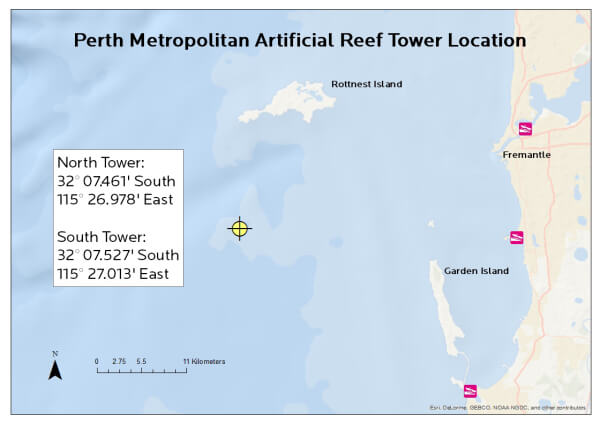 This project was made possible by the Recreational Fishing Initiatives Fund and supported by Recfishwest and the WA Department of Fisheries.
This project was made possible by the Recreational Fishing Initiatives Fund and supported by Recfishwest and the WA Department of Fisheries.